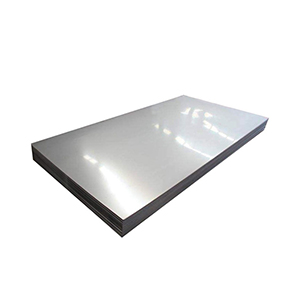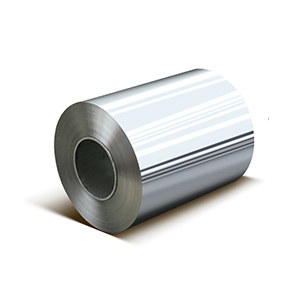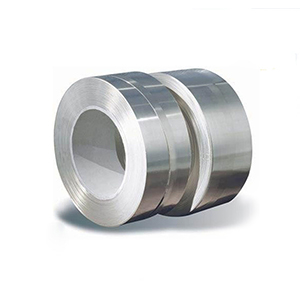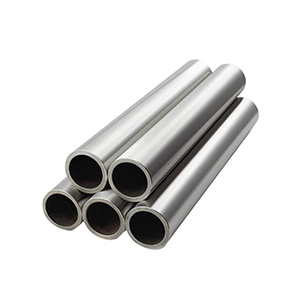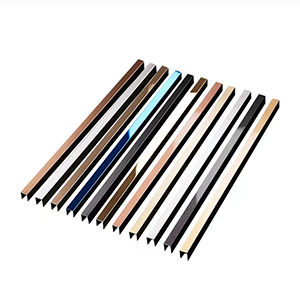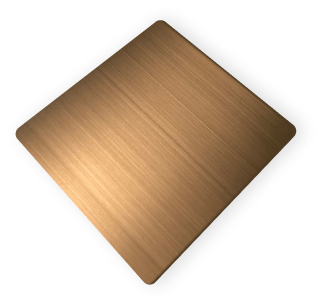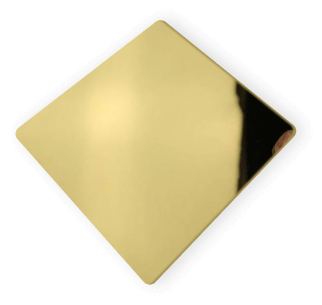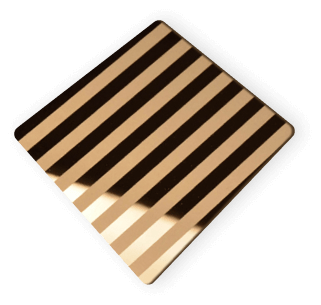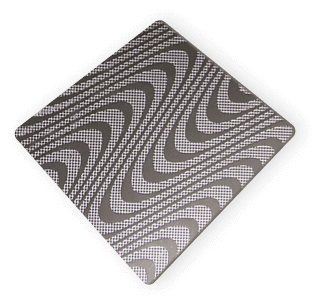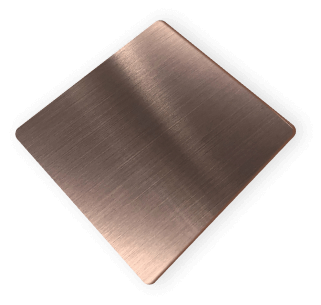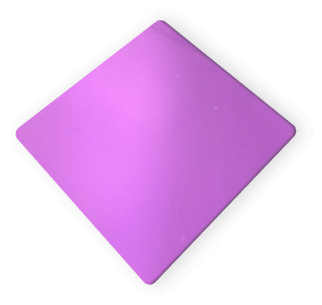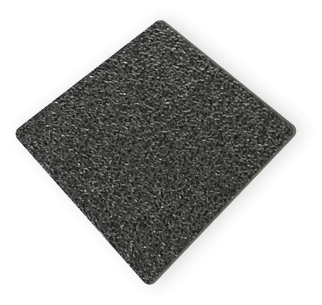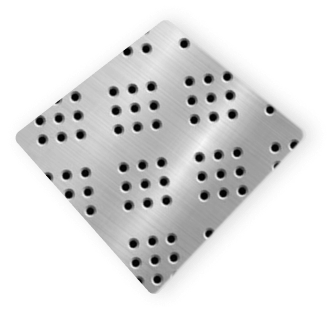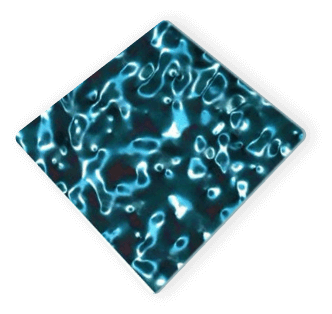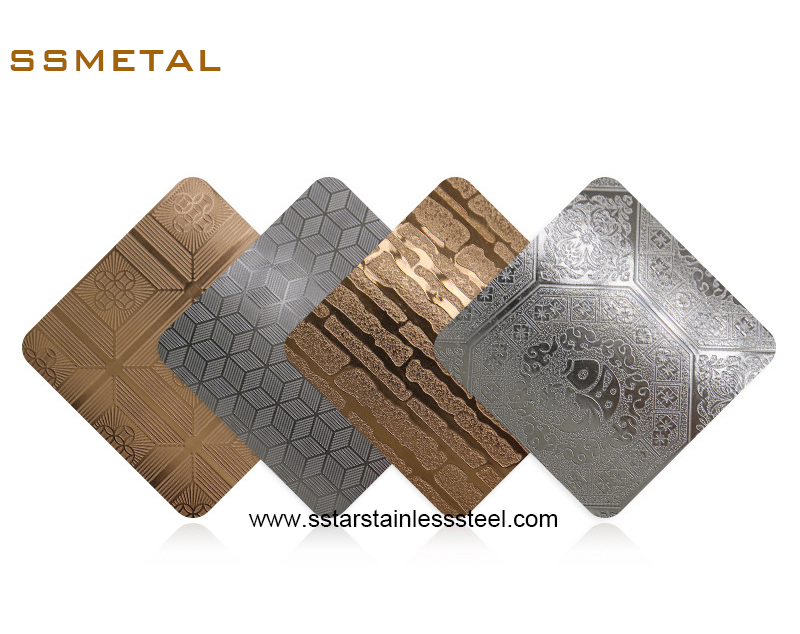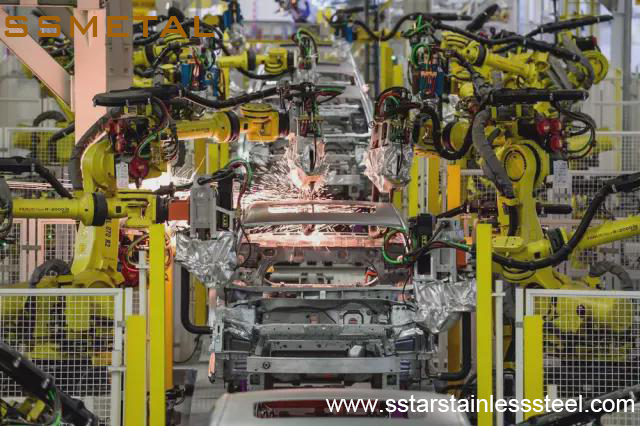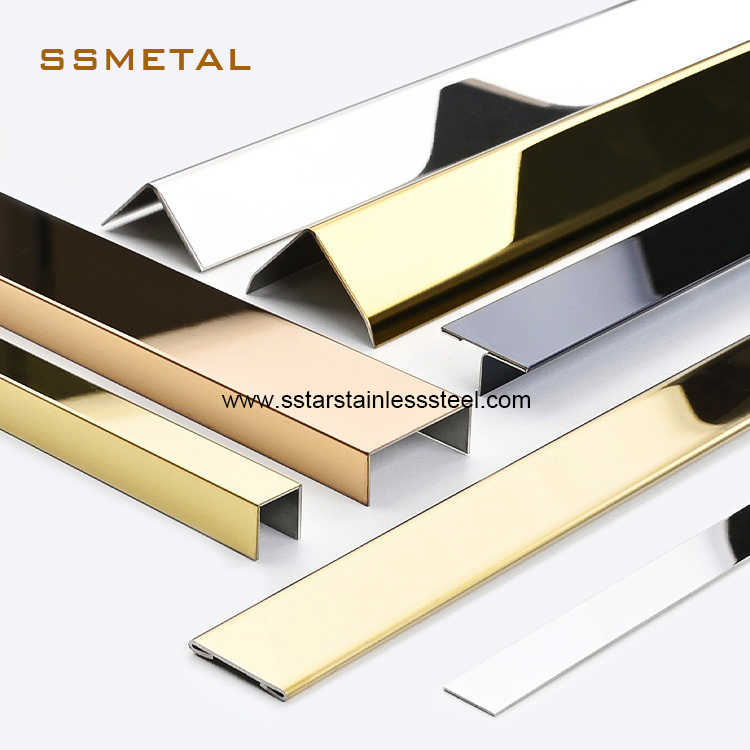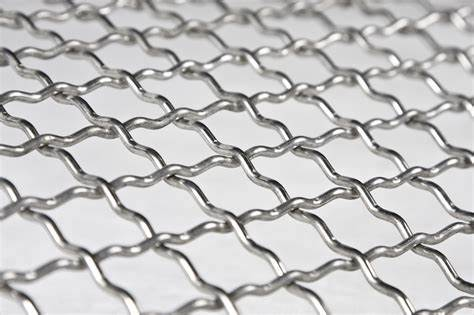
Источник: передовая инженерная группа
Все знакомы с железом, углерод, и сталь. Железо и углерод – основные химические элементы, из которых состоит сталь.. Маленький, как ножницы, размером с космический корабль, эти изобретения неотделимы от использования стали.
Сталь на самом деле представляет собой огромное семейство металлических сплавов.. профессиональными методами, сталь можно разделить на разные виды. Например, по количеству химического элемента углерода, сталь можно разделить на мягкую сталь (С≤0,25%), среднеуглеродистая сталь (С≤0,25~0,60%) и высокоуглеродистая сталь (С≤0,60%).
При выборе углеродистой или нержавеющей стали следует учитывать множество факторов., такой как твердость, цена, приложения и так далее. Иногда потребителям также необходимо принять во внимание производителя и поставщика..
Например, как Поставщик нержавеющей стали, SSMETAL славится своим разнообразным Продукт из нержавеющей стали включая большие листы, катушки, полосы, трубы, и профили. Цель SSMETAL – обеспечить потребителей высококачественными нержавеющими материалами.. SSMETAL также является одним из лучших Поставщик листа нержавеющей стали поскольку он имеет точную технологию резки и продольной резки, позволяющую адаптироваться к различным требованиям к размеру.
В этой статье кратко обсуждаются два распространенных типа стали.: нержавеющей стали и углеродистой стали и сравните их разницу по отношению к твердость, эластичность, масса, цена, и приложения.
Углеродистая сталь и ее четыре типа
Углеродистая сталь представляет собой железоуглеродистый сплав с содержанием углерода от 0.0218% к 2.11%. Этот тип стали также содержит небольшое количество кремния., марганец, сера и фосфор. Для углеродистой стали, чем выше содержание углерода, тем больше твердость и прочность, но тем ниже пластичность.
Существует четыре основных категории углеродистой стали.: низкий, середина, высокий, и сверхвысокий.
Низкоуглеродистая сталь обычно под 0.30% углерод легко формуется и часто используется в трубах., проволока, и общее оборудование.
Среднеуглеродистая сталь имеет содержание углерода между 0.31% и 0.6%. Этот тип стали намного прочнее и используется в железнодорожном строительстве., механические детали, и другие подобные приложения.
Содержание углерода в высокоуглеродистая сталь находится между 0.61% и 1%. Чаще всего он используется в изделиях с высокой прочностью на растяжение или в изделиях, подверженных износу, таких как лезвия и пружины..
Сверхвысокоуглеродистая сталь содержит примерно 1,25–2,0% углерода.. Его можно закалить до большой твердости..
Нержавеющая сталь и ее пять типов
Нержавеющая сталь содержит железо, углерод, и по крайней мере 10.5% хром. Хром является ключевым компонентом нержавеющей стали.. Он реагирует с кислородом, образуя пассивирующий слой, который защищает сталь от коррозии..
Есть более чем 100 марки нержавеющей стали, большинство из которых подразделяются на пять групп: аустенитный, ферритный, мартенситный, дуплекс, и дисперсионно-твердеющие.
С 16 к 26 процентов хрома и до 35 процент никеля, аустенитные стали обычно имеют самую высокую коррозионную стойкость. Они не поддаются термической обработке и немагнитны.. Наиболее распространенной разновидностью аустенитной стали является 18/8, или 304 оценка, который содержит 18 процент хрома и 8 процент никеля. Типичные области применения включают авиацию и пищевую промышленность..
Стандартные ферритные стали
Он содержит 10.5 к 27 процент хрома и не содержит никеля. Это связано с низким содержанием углерода. (меньше, чем 0.2 процент) что ферритные стали не упрочняются термической обработкой и имеют менее важные антикоррозионные применения., например, архитектурная и автомобильная отделка.
Мартенситные стали
обычно содержат 11.5 к 18 процентов хрома и до 1.2 процент углерода с добавлением никеля. Они закаливаются термической обработкой., имеют умеренную коррозионную стойкость, и применяются для производства столовых приборов, хирургические инструменты, ключи, и турбины.
Дуплексные нержавеющие стали
Это сочетание аустенитной и ферритной нержавеющей стали в равных количествах.. Это означает, что дуплексные нержавеющие стали содержат 21 к 27 процент хрома, 1.35 к 8 процент никеля, 0.05 к 3 процент меди, и 0.05 к 5 процент молибдена. Дуплексные нержавеющие стали прочнее и устойчивее к коррозии, чем аустенитные и ферритные нержавеющие стали., которые полезны при строительстве резервуаров для хранения, химическая обработка, и контейнеры для перевозки химикатов.
Дисперсионно-твердеющая нержавеющая сталь
Обычно он содержит 15 к 17.5 процент хрома, 3 к 5 процент никеля, и 3 к 5 процент меди. Этот тип нержавеющей стали славится своей прочностью благодаря добавлению алюминия., медь, и ниобий в сплав в количествах менее 0.5 процент от общей массы сплава. Часто используется при строительстве длинных валов., по коррозионной стойкости сравним с аустенитной нержавеющей сталью..
Сравнение
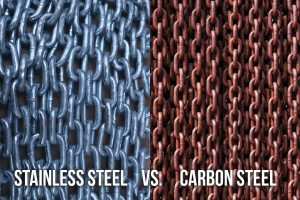
Источник: Монроинжиниринг
твердость
В материаловедении, твердость способность противостоять вмятинам на поверхности (локализованная пластическая деформация) и царапая. Твердость, вероятно, является наиболее плохо определенным свойством материала, поскольку она может указывать на устойчивость к царапинам., устойчивость к истиранию, устойчивость к вдавливанию или даже устойчивость к формованию или локализованной пластической деформации. Твердость важна с инженерной точки зрения, поскольку устойчивость к износу вследствие трения или эрозии паром., масло, и вода обычно увеличивается с жесткостью.
Испытание предоставляет численные результаты для количественной оценки твердости материала., который выражается числом твердости по Бринеллю – HB.. Число твердости по Бринелю определяется наиболее часто используемыми стандартами испытаний. (АСТМ Е10-14[2] и ИСО 6506–1.:2005) как HBW (H от твердости, Б из Бринеля, и W от материала индентора, вольфрам (вольфрам) карбид). В прежних стандартах, HB или HBS использовались для обозначения измерений, выполненных с помощью стальных инденторов..
Высокоуглеродистая сталь настолько тверда и износостойка, что может выдержать большую силу, прежде чем деформируется.. К сожалению, твердые металлы также хрупкие. Высокоуглеродистая сталь скорее треснет, чем погнется. при нахождении под сильным растягивающим напряжением. Из нержавеющей стали, хром может использоваться в качестве упрочняющего элемента и часто используется в сочетании с упрочняющими элементами, такими как никель, для получения превосходных механических свойств..
Некоторые распространенные материалы и их твердость по Бринеллю
| Материал | Число твердости по Бринеллю – полупансион (МПа) |
| Вести | 5.0 |
| Медь | 35 |
| Мягкая латунь | 60 |
| Ферритная нержавеющая сталь | 180 |
| Нержавеющая сталь – 304 | 201 |
| Дуплекс из нержавеющей стали | 217 |
| Дисперсионно-твердеющие стали | 353 |
| Белый чугун | 415 |
| Стекло | 1550 |
Эластичность
Модуль упругости Юнга представляет собой модуль упругости для растягивающих и сжимающих напряжений в режиме линейной упругости одноосной деформации и обычно оценивается испытаниями на растяжение.. До предельного напряжения, тело сможет восстановить свои размеры после снятия нагрузки. Приложенные напряжения заставляют атомы в кристалле перемещаться из положения равновесия.. Все атомы смещаются на одинаковую величину и сохраняют свою относительную геометрию.. Когда стрессы сняты, все атомы возвращаются в исходное положение, остаточной деформации не происходит..
Модуль упругости Юнга высокоуглеродистой стали равен 200 ГПа, и аустенитная нержавеющая сталь 45 ГПа. Модуль Юнга стали является мерой ее жесткости/сопротивления упругой деформации растягивающим нагрузкам.. Причина различных значений модуля Юнга сталей связана с технологическим процессом производства., который учитывает количество примесей в стали и указанный тип/марку стали..
Долговечность
Углеродистая сталь может ржаветь в некоторых условиях, поскольку ей не хватает коррозионной стойкости, как у ее аналога из нержавеющей стали.. Хотя углеродистая сталь прочнее нержавеющей стали., он может ржаветь и корродировать под воздействием влаги. Даже небольшое количество влаги, включая влажные пары в воздухе, может вызвать ржавчину углеродистой стали.
Углеродистая сталь менее пластична, чем нержавеющая сталь.. Нержавеющая сталь обычно более податлива, чем углеродистая сталь., главным образом из-за более высокого содержания никеля. Но некоторые нержавеющие стали очень хрупкие., как мартенситная нержавеющая сталь.
Масса
Сталь – деформируемый материал., поэтому на свойства и вес стали могут влиять разные условия.. Теоретический вес стали относится к весу на единицу длины материала определенной длины и толщины.. При расчете теоретического веса, в дополнение к наружному диаметру и толщине, указанным в спецификации, необходимо учитывать особенности материала, например, тип металла, содержание элементов и удельный вес.
Плотность нержавеющей стали составляет около 7.9 г/см3. Вес нержавеющей стали на кубический дюйм составляет 0.285 фунты, и на кубический фут 490 фунты. Типичная плотность пластины из углеродистой стали составляет 0.284 фунты на кубический дюйм. Вес углеродистой стали на кубический фут составляет 490 фунты в имперском или 7.85 кубические метры в метрических единицах.
Цена
Цена на сталь определяется многими переменными, такими как поставлять, требовать, и цены на энергоносители. Цены на сырье меняются ежедневно. Однако, вообще говоря, нержавеющие стали стоят в четыре-пять раз дороже углеродистой стали по стоимости материалов. Углеродистая сталь стоит около 500 долларов за тонну., в то время как нержавеющая сталь стоит около 2000 долларов за тонну..
Нержавеющая сталь дороже углеродистой стали, поскольку другие сплавы, например хром, никель, и марганец, добавляются в процесс изготовления нержавеющей стали. Использование этих дополнительных элементов увеличивает стоимость.. По сравнению с нержавеющей сталью, углеродистая сталь в основном состоит из относительно недорогого железа и углерода.. Поэтому углеродистую сталь дешевле производить.. Если бюджет ограничен, углеродистая сталь может быть лучшим выбором.
При покупке бытовой техники и других крупных вещей, важно обратить внимание на марку нержавеющей стали. Не вся нержавеющая сталь имеет одинаковую цену.. Нержавеющая сталь с минимальным содержанием хрома 10.5% намного дешевле и менее долговечна, чем нержавеющая сталь с содержанием хрома 16%. Разница в цене позже отразится на затратах на техническое обслуживание и сроке службы..
Заявление
Наиболее распространенной формой стали является углеродистая сталь.. До 90% из стали, производимой сегодня, является углеродистая сталь. Широкая доступность, диапазон свойств, и стоимость делают эту форму стали идеальной для производства., строительство, транспорт, и промышленное использование.
Типичные области применения низкоуглеродистой стали включают компоненты кузова автомобиля., структурные формы, и листы, которые используются в трубопроводах, и здания.
Среднеуглеродистая сталь в основном используется при производстве деталей машин., валы, оси, шестерни, коленчатые валы, муфты и поковки, а также могут использоваться в рельсах и железнодорожных колесах..
Высокоуглеродистые стали могут использоваться для пружин, веревочные провода, молотки, отвертки, и ключи.
Сверхвысокоуглеродистая сталь может использоваться для изготовления изделий из твердой стали., например, рессоры для грузовиков, режущие инструменты по металлу, и других специальных целей, таких как (непромышленного назначения) ножи, оси, или удары руками. Большинство сталей с более чем 2.5% содержание углерода изготовлены методом порошковой металлургии.
Несмотря на разнообразие типов нержавеющей стали, регулярно используется только дюжина или около того.
Например, Тип AISI 304 SS, имеющий хромоникелевую составляющую и низкоуглеродистый, популярен благодаря хорошей коррозионной стойкости, очищаемость, и формуемость, что делает его популярным для многих предметов повседневного использования, таких как кухонные мойки..
Тип AISI 316 SS, содержащий легирующий элемент молибден, даже более устойчив к химическому воздействию, чем Тип 304, что делает его полезным при воздействии морской воды, рассол, серная кислота, и другие коррозионные вещества, обнаруженные в промышленной среде..
В общем, нержавеющая сталь обычно используется в агрессивных или высокотемпературных средах.. Высокий уровень хрома и никеля придает нержавеющей стали уникальные свойства для работы в таких средах.. Обычное применение — кухонная утварь., применение соленой воды, и автомобильные выхлопы. Нержавеющая сталь также встречается в бытовой технике., ящики для инструментов, автомобильные колеса, и так далее.
Заключение
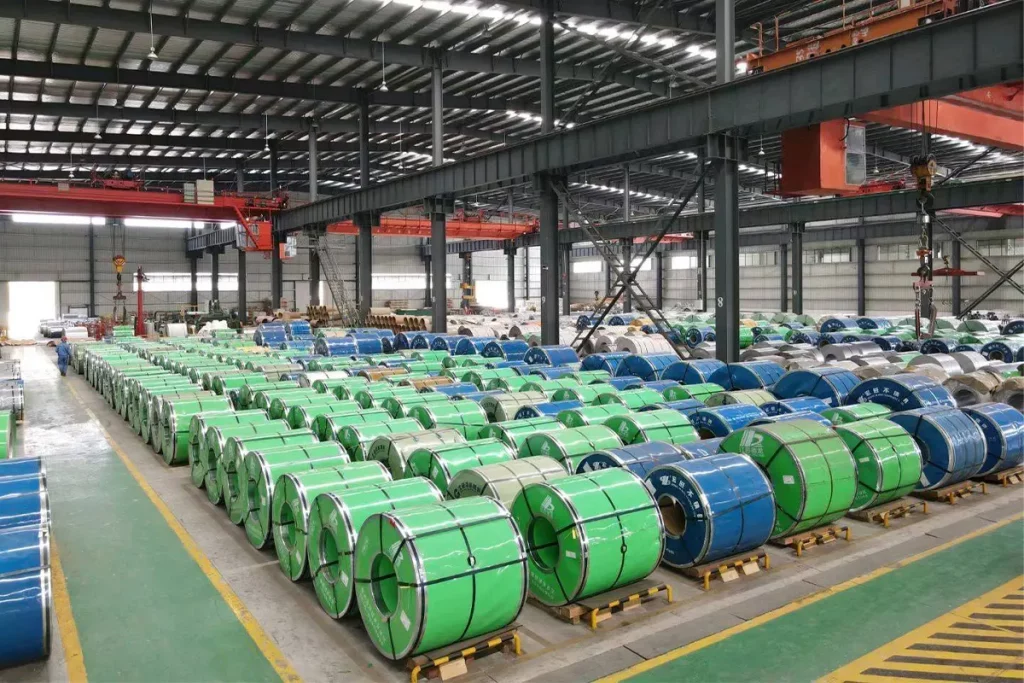
Источник: ссметалинокс
Подводить итоги, Углеродистая сталь и нержавеющая сталь имеют преимущества и недостатки в разных аспектах.. Каждый тип стали различается по своим свойствам, таким как твердость, эластичность, долговечность, масса, и цена поэтому разные виды стали применяются в разных условиях. Потребители должны учитывать свойства стали при покупке..
Углеродистая сталь или нержавеющая сталь? Независимо от разницы между углеродистой сталью и нержавеющей сталью, самое главное, чтобы потребители могли выбрать тот тип стали, который соответствует их требованиям..






